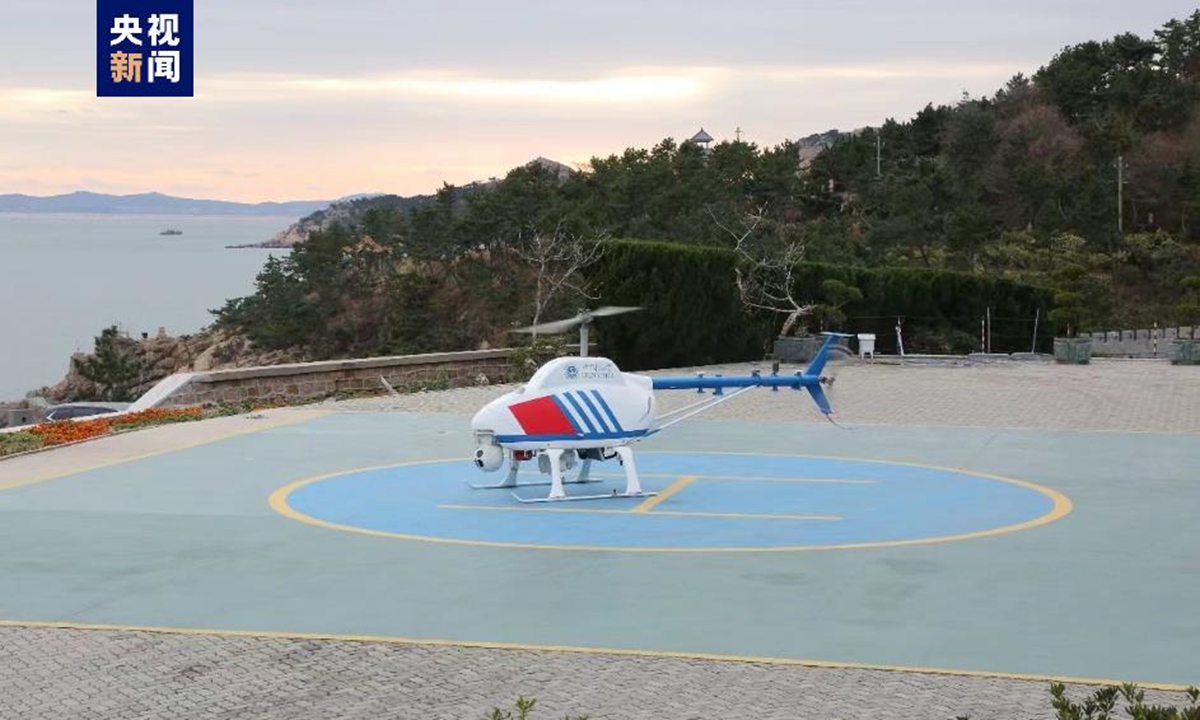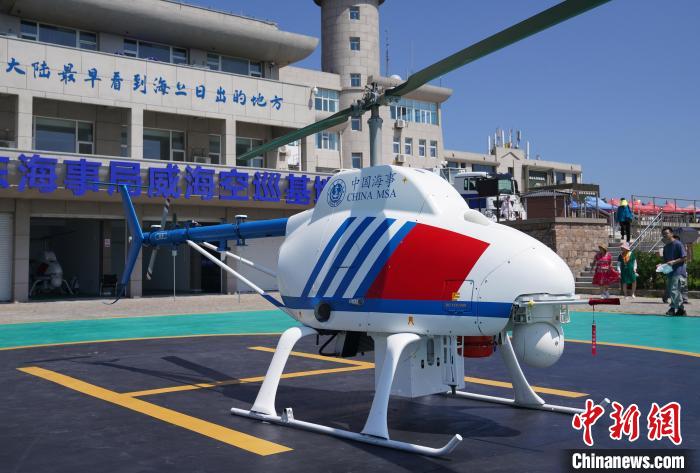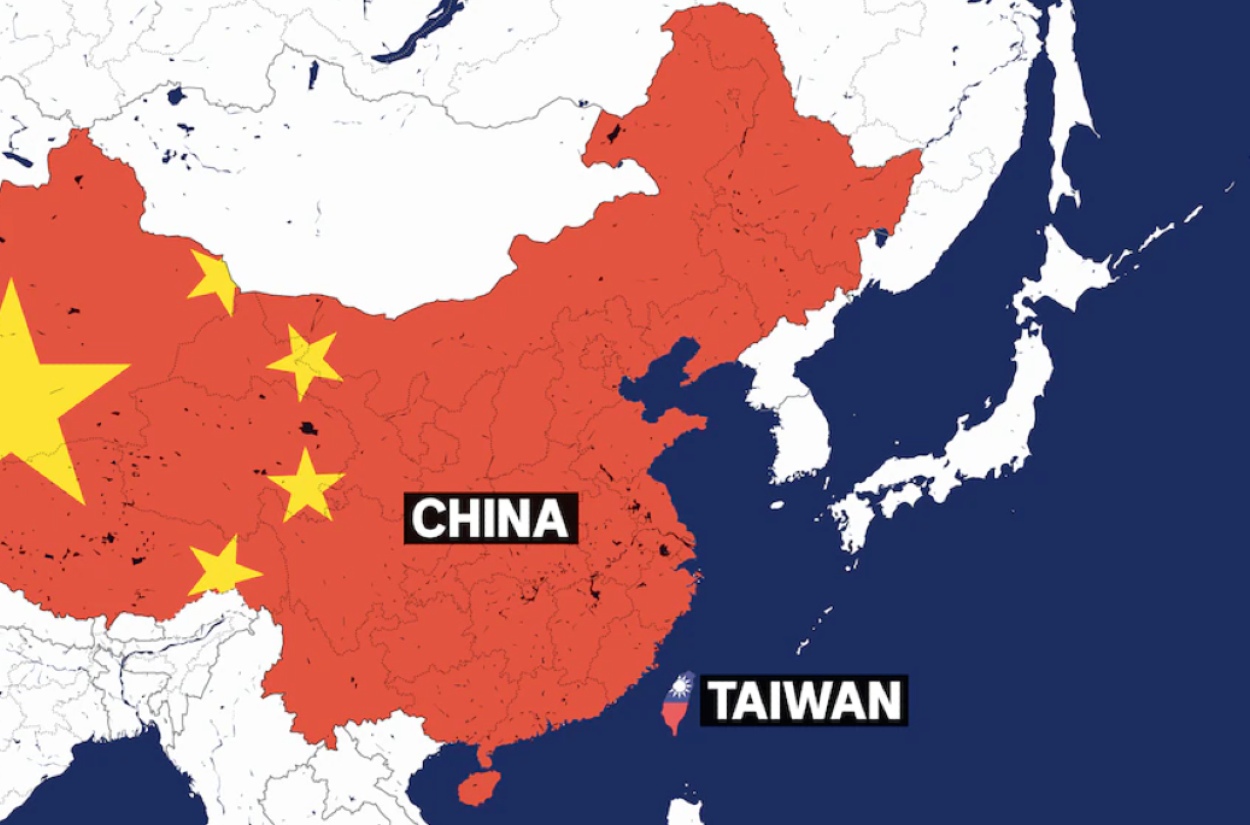On November 29, Beijing inducted the first batch of what Chinese state media described as the most advanced unmanned helicopter deployed in China’s maritime system.
State-run Global Times reported that this deployment aims to improve water traffic management and enhance response capabilities for maritime emergencies.
The induction occurred in Weihai in East China’s coastal Shandong Province, marking a significant step in bolstering China’s maritime capabilities.
The unmanned helicopters will be deployed to oversee the waters surrounding Chengshantou, situated as the easternmost point of Shandong, with three sides bordered by the sea.
This strategic location makes Chengshantou a vital juncture for ships navigating in and out of ports in the Bohai Sea and the northern sector of the Yellow Sea.
The area witnesses the passage of approximately 110,000 commercial vessels annually, accompanied by thousands of fishing boats engaging in daily operations.
Wang Gang, the Director of the Command Center at the Weihai Maritime Bureau, explained to Global Times that these unmanned maritime helicopters are equipped with aerial photography tools to effectively monitor and track illegal vessels during routine law enforcement activities.
This capability enables swift investigation and evidence collection, aiding onshore and offshore law enforcement teams in addressing maritime violations.
Wang further highlighted the helicopters’ capacity to perform rescue operations and monitor oil spills across large water areas in a short timeframe.

This functionality is crucial in preventing ship pollution and facilitating emergency response operations in both the Bohai and the Yellow Seas.
Unmanned helicopters can also be employed in training scenarios, enabling maritime personnel to simulate different situations and emergencies within a controlled setting.
Furthermore, these helicopters can act as mobile communication relays in regions with limited communication infrastructure, ensuring uninterrupted maritime operations and connectivity.
Nonetheless, this induction signifies Beijing’s emphasis on expanding its maritime surveillance capabilities.
Capabilities Of China’s Newly Inducted Unmanned Maritime Helicopters
In August 2022, People’s Daily initially reported the first set of these compact unmanned helicopters was delivered to the Weihai Maritime Bureau, Weihai, Shandong, for utilization and trial operation.
Following the completion of testing, these drones have been officially inducted. The state media has reported that the batch comprises two unmanned helicopters.
China’s Ministry of Transport has also greenlit the integration of small unmanned helicopters into the national maritime system.
While the precise name of the drone remains undisclosed, its design implies an affiliation with the AV500 rotary-wing vertical take-off and landing (VTOL) drone family.
Global Times said that the two newly operational unmanned maritime helicopters represent the forefront of advanced technology within China’s naval system.

These unmanned helicopters, measuring 7.33 meters in length, 1.58 meters in width, and 2.43 meters in height, are equipped with state-of-the-art features.
These advanced helicopters boast impressive specifications, including a payload capacity of 75 kilograms, a remote control range extending up to 150 kilometers, and a maximum endurance range of 400 kilometers.
Additionally, they achieve a remarkable maximum flight speed of 150 km/h. Furthermore, the UAVs come equipped with cutting-edge technology such as infrared thermal imaging, real-time long-distance video transmission capabilities, and emergency rescue material delivery systems.
Notably, they are designed to undertake missions even in challenging weather conditions, with the ability to operate in wind speeds of up to level 8, equivalent to no more than 74 km/h, according to the National Meteorological Information Center.

Nonetheless, Beijing is actively deploying helicopter drones, envisioning their role as “scouts” on warships and vital assets within the coastguard.
Furthermore, careful attention has been given to crafting these drones to suit maritime conditions. Their fuel, structure, electronics, and avionics systems have been meticulously optimized to withstand challenges like humidity, mold, and exposure to saltwater.
The unmanned aerial vehicle holds promise for ships seeking to monitor extensive maritime areas and gather vessel information efficiently.
Moreover, the development of such drones has offered crucial technological insights for designing and producing heavier versions intended for deployment on larger warships such as aircraft carriers and destroyers.
- Contact the author at ashishmichel(at)gmail.com
- Follow EurAsian Times on Google News




